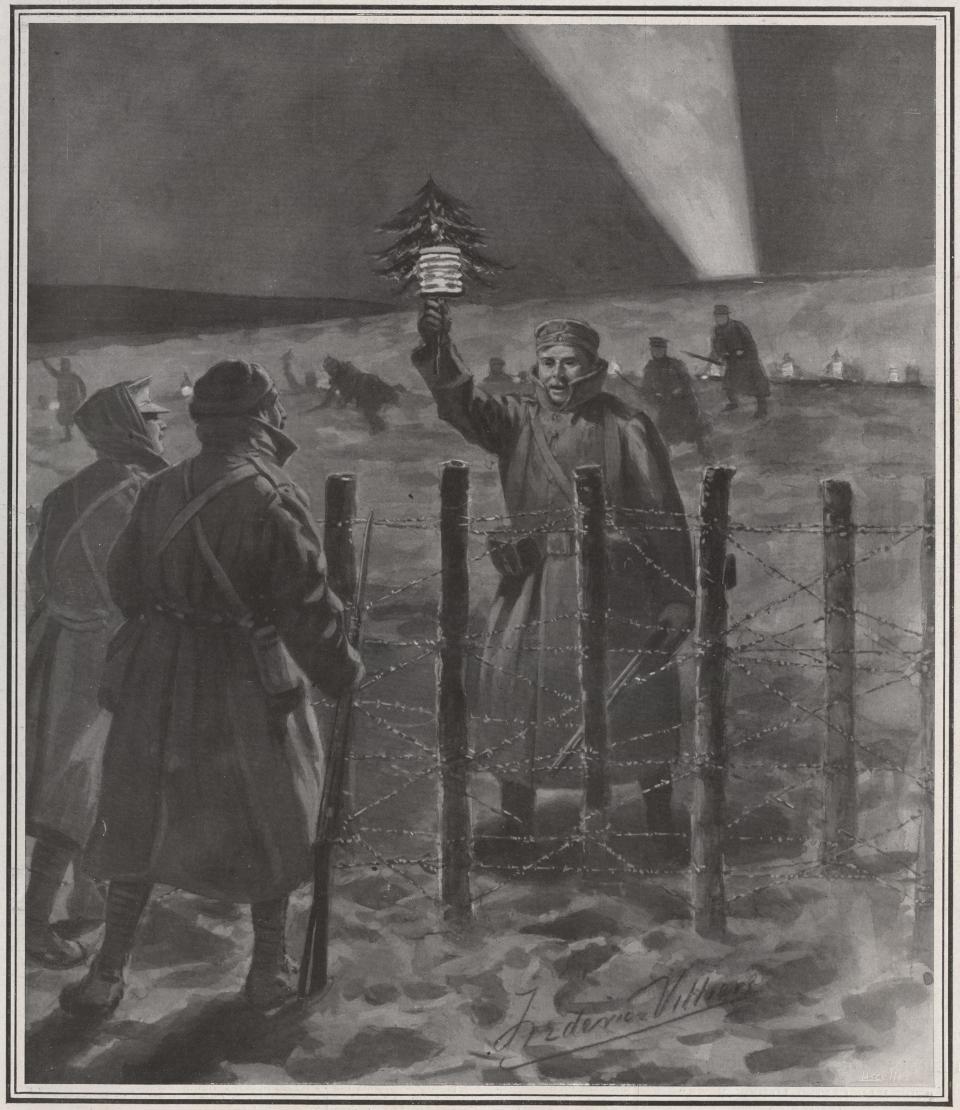Lessons from the Christmas Truce of World War I are valuable today
More than a hundred years have passed since the founding catastrophe of the 20th century. Exactly why World War I began is still debated by historians, but what is clear is that it was the world’s leaders who declared war upon each other. Similarly, on a cold winter night in 1914, it was the ones who were tasked with fighting who declared peace.
On Christmas Eve 1914, along parts of the Western and, to a much smaller extent, Eastern Fronts a spontaneous truce was declared among the weary, entrenched combatants of the Great War. The National WWI Museum and Memorial has spent decades exploring this event – now known as the Christmas Truce – by studying firsthand accounts from soldiers themselves, as well as working with noted historians. We are left with this conclusion: The lessons to be learned from the Christmas Truce are abundant.

This holiday season, we’re approaching two years in a global pandemic. Many of us have experienced profound loss and trauma in ways we never imagined. The world feels divided about the best path forward, and a return to “normalcy” seems out of reach. Perhaps, in this way, we can relate and learn from those who served in World War I.
The common belief when war broke out was that the fighting would quickly be over, or as German Kaiser Wilhelm II addressed troops leaving for the front in August 1914, “You will be home before the leaves fall from the trees.”
At the time, 11 nations – and their colonies, dominions and protectorates – were at war, expanding the conflict to all six inhabited continents.
In December 1914, trench warfare left neither side with a clear advantage, and the “short war” leaders promised dragged on into the winter.
Looking through the letters
Exactly what happened on Christmas Day 1914 can be found in the many personal records that exist, though like the differing terrain over the thousands of miles on which World War I occurred, they vary greatly. Many accounts indicate that front-line leaders declared brief cease-fires in order to retrieve bodies and bury the dead. Lance Cpl. Buckie Imlah of the British Army wrote in a letter home that in addition to the practical need of gathering their deceased, the spirit of the day weighed into the decision: “For was it not Christmas Day, the day of peace and goodwill towards men?”
Some records contain stories of helping to bury the war dead of the enemy.
Rifleman J. Reading wrote in a letter home to his wife that an armistice began where he was positioned when a German company’s band across the battle line began playing Christmas carols in the night. Later, they emerged from the trenches unarmed and met the British company halfway, exchanging handshakes, cigarettes and souvenirs. “We did not fire that day, and everything was so quiet that it seemed like a dream," he wrote.
There are even reports of a machine gun wagon driving through the countryside laden with barrels of beer.
Opinions in your inbox: Get a digest of our takes on current events every day
Historian Stanley Weintraub, a contributor in the Museum and Memorial’s online exhibition, The Christmas Truce, Winter 1914, recalled in his research that “between the warring sides in No Man's Land, with corpses buried with due honor and shell craters filled in, became a place for fraternization rather than confrontation, for sharing Christmas gifts, singing holiday carols and bawdy service songs, even for playing football – our soccer – with improvised balls and goals.”
Promoting humanity
Of course, not all records point to this kind of peaceful merriment. “You don't want to believe half what is being said about concerts going on between the Allies and the Germans. It is all lies,” wrote British Pvt. George Minto, in a letter to his father.
History tells us, that even when confronted with the most horrific of circumstances that feel out of our control to change, humankind is always one moment away from powerful acts of goodwill and compassion. We have shown that we are capable of respect, of kinship with those who differ from us, of setting aside differences, of making meaningful and impactful gestures.
The Christmas Truce shows us that extreme humanity is possible, even in the face of the impossible.
I am inspired by the stories from these soldiers who laid down their weapons in a time of war to share in a brief moment of peace. May we all carry these lessons with us into the new year.
Matthew C. Naylor is president and CEO for the National World War I Museum and Memorial.
You can read diverse opinions from our Board of Contributors and other writers on the Opinion front page, on Twitter @usatodayopinion and in our daily Opinion newsletter. To respond to a column, submit a comment to letters@usatoday.com.
This article originally appeared on USA TODAY: Christmas truce in World War I reminds us of need for humanity

